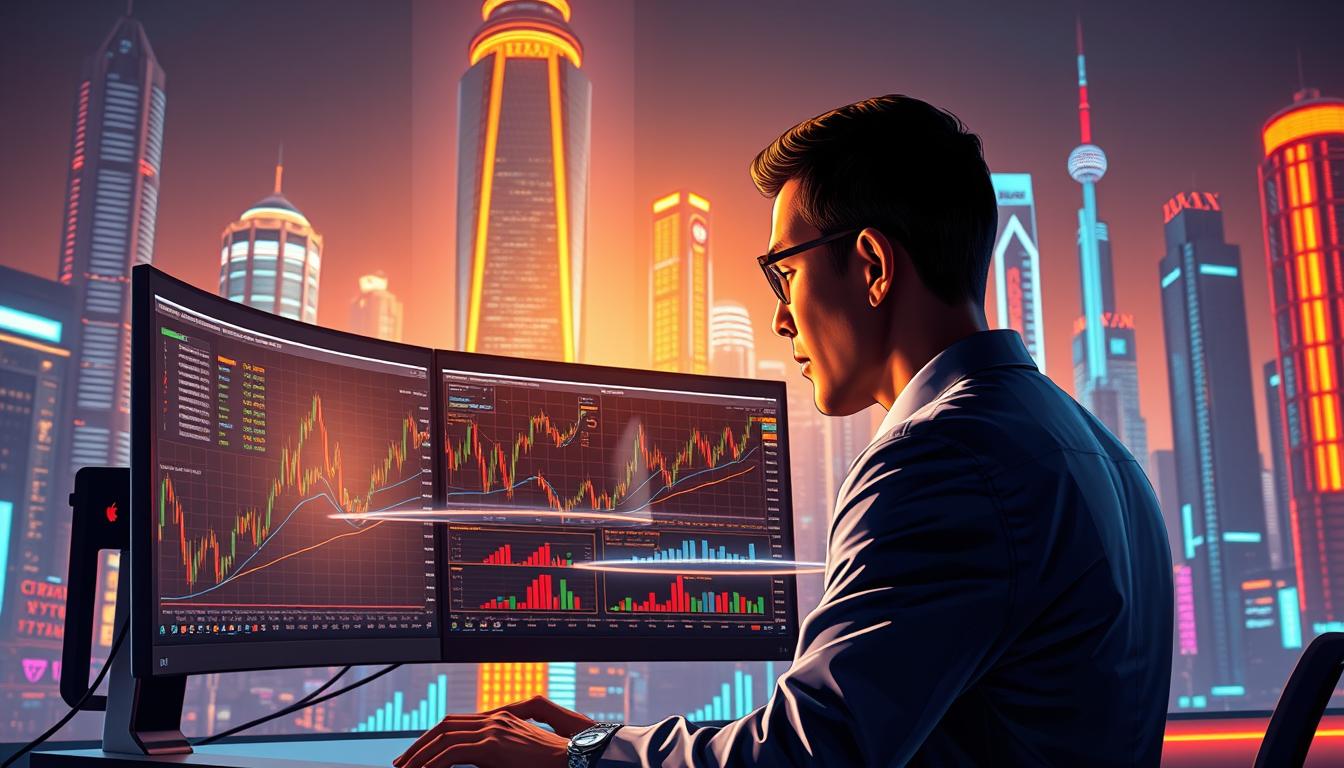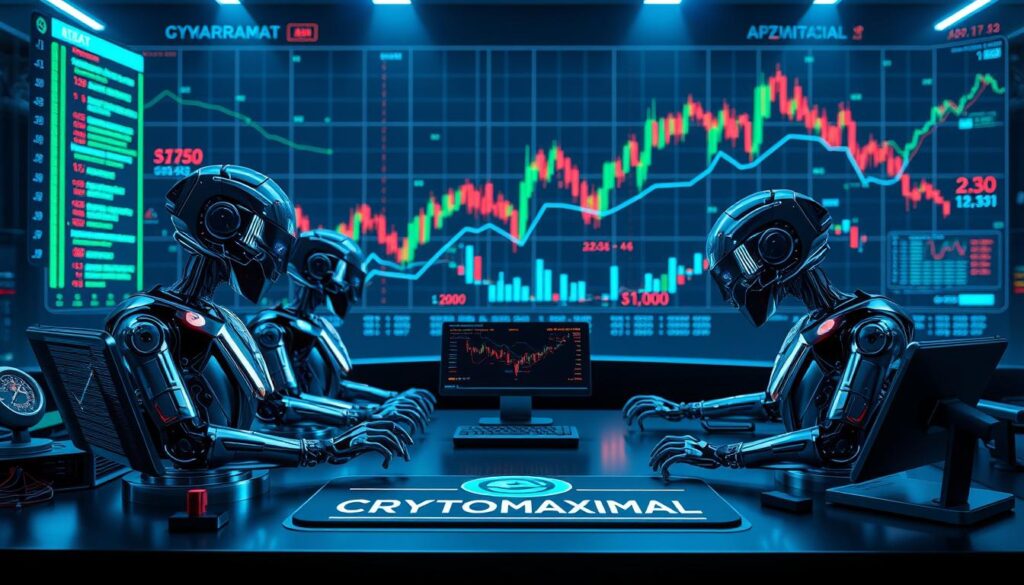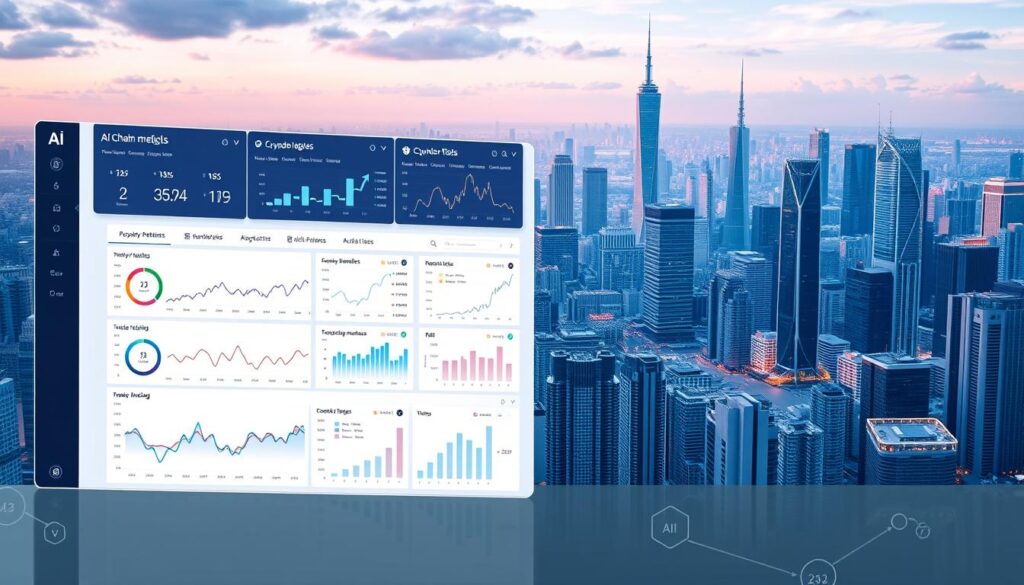Now Reading: Unlock the Power of AI for Crypto Trading: A Beginner’s Guide
- 01
Unlock the Power of AI for Crypto Trading: A Beginner’s Guide
Unlock the Power of AI for Crypto Trading: A Beginner’s Guide

The world of cryptocurrency is evolving rapidly, and artificial intelligence is at the forefront of this transformation. By leveraging advanced algorithms, traders can now make smarter, faster, and more informed decisions. This guide is designed to simplify complex concepts, making it easy for beginners to get started.
Imagine earning $6,000 in just 2 hours—this is the reality for users of platforms like ArbitrageScanner. With trading bots, you can operate 24/7, eliminating emotional biases and maximizing efficiency. Tools like Cryptohopper and 3Commas are revolutionizing the way we interact with the blockchain.
However, it’s essential to understand both the opportunities and risks. This guide will walk you through practical steps, from basic setups to advanced strategies, while emphasizing the importance of risk management. Whether you’re a novice or looking to refine your skills, this tutorial offers actionable insights to help you succeed in the dynamic world of crypto trading.
What is AI Crypto Trading?
The integration of advanced technology is reshaping how we approach digital assets. These tools analyze vast amounts of data to identify patterns and execute actions with precision. This process is transforming the way people interact with financial markets, making complex strategies accessible to everyone.

Understanding the Basics
At its core, these systems rely on algorithms to process information and make decisions. For example, platforms like AlgosOne achieve an 80%+ win rate by leveraging machine learning. This allows users to benefit from predictive capabilities based on historical data.
Speed is another critical factor. Tools like Photon Sol execute trades 5-10 seconds faster than competitors, giving users an edge in volatile crypto markets. This efficiency is particularly valuable when dealing with rapid price fluctuations.
How AI is Revolutionizing Crypto Markets
One of the most significant advancements is the ability to operate 24/7. Unlike human traders, these systems can monitor multiple exchanges simultaneously, identifying opportunities in real-time. This includes multi-exchange arbitrage, where price differences across platforms are exploited for profit.
Automated risk management is another game-changer. Systems can adjust strategies dynamically, minimizing losses and maximizing gains. For instance, Trojan Bot’s DCA trading on Solana ensures consistent performance even in uncertain conditions.
Sentiment analysis tools, like those in ArbitrageScanner, further enhance decision-making by evaluating market emotions. This democratization of complex strategies allows even beginners to participate effectively in the crypto markets.
How Do AI Crypto Trading Bots Work?
Modern tools are eliminating human errors in financial strategies. These systems rely on advanced algorithms to execute actions with precision, ensuring consistency and efficiency. By automating complex processes, they offer a level of reliability that manual methods often struggle to achieve.

Algorithmic Trading Explained
At the heart of these systems lies algorithmic trading. Bots analyze vast amounts of data to identify patterns and execute trades in milliseconds. For example, platforms like AlgosOne use machine learning to predict market movements based on historical data.
Speed is critical in volatile markets. Tools like Photon Sol execute trades 5-10 seconds faster than competitors, giving users a significant edge. This efficiency ensures that opportunities are seized before they disappear.
Emotion-Free Trading: The Role of AI
One of the biggest advantages of bots is their ability to eliminate emotional biases. Fear and greed often lead to poor decisions in manual trading. Automated systems, however, stick to predefined strategies without hesitation.
For instance, AlgosOne automatically implements hedging tools to minimize losses. Similarly, Trojan Bot’s limit order advantages ensure consistent performance even in uncertain conditions. This emotion-free approach prevents common pitfalls like FOMO-driven losses.
Portfolio rebalancing is another area where bots excel. They adjust allocations dynamically, ensuring optimal performance. By addressing overconfidence bias, these systems provide a level of consistency that human traders often struggle to achieve.
Benefits of Using AI in Crypto Trading
Harnessing technology in financial markets brings unparalleled efficiency and precision. Automated systems ensure consistent performance, allowing traders to focus on strategies rather than manual execution. These tools are designed to maximize profits while minimizing risks, making them invaluable for both beginners and experienced users.

24/7 Market Monitoring
One of the standout features is the ability to monitor markets around the clock. Unlike manual methods, these systems can track multiple exchanges simultaneously. This ensures no opportunity is missed, even during volatile periods.
For example, platforms like ArbitrageScanner analyze wallet analytics in real-time. This allows users to make informed decisions based on the latest data. Such capabilities are crucial for staying ahead in fast-paced markets.
Enhanced Risk Management
Effective risk management is a cornerstone of successful trading. Automated tools like AlgosOne offer balance coverage through reserve funds, ensuring stability even in uncertain conditions. Similarly, 3Commas provides smart hedging tools to minimize losses.
Stop-loss and trailing stop configurations further enhance safety. These features automatically adjust positions based on market movements, protecting investments from sudden downturns. By addressing volatility and black swan events, these systems provide a layer of security that manual methods cannot match.
Additionally, tools like Photon incorporate slippage controls to optimize execution. This ensures trades are completed at the best possible prices, reducing unnecessary fees and maximizing returns.
Risks and Challenges of AI Crypto Trading
While technology offers significant advantages, it’s crucial to understand the risks involved. Over-reliance on automated systems can lead to unexpected pitfalls, and security vulnerabilities remain a top concern. This section explores these challenges in detail.
Potential for Over-Reliance on AI
Automated systems are powerful, but they are not infallible. Relying too heavily on these tools can lead to complacency. For example, if a bot malfunctions or encounters an unforeseen scenario, the results can be costly.
Platforms like AlgosOne use advanced algorithms, but even they require oversight. Traders must stay informed and regularly review their strategies. Blind trust in technology can result in missed opportunities or significant losses.
Security Concerns and Vulnerabilities
Security is a major issue in the digital asset space. The $650M Axie Infinity hack highlights the risks associated with decentralized systems. Even well-established platforms can fall victim to attacks.
Exchange API keys are a common target for hackers. Ensuring proper storage and access controls is essential. Tools like ArbitrageScanner implement robust API safety measures, but users must also take precautions.
Smart contracts, often used in decentralized exchanges, can have vulnerabilities. Multi-sig wallets and cold storage solutions add an extra layer of protection. Additionally, phishing attacks remain a persistent threat, requiring constant vigilance.
Setting Up Your First AI Crypto Trading Bot
Getting started with automated systems can seem daunting, but with the right approach, it’s straightforward. The key is to choose a platform that aligns with your goals and configure it effectively. This section will guide you through the process step by step.
Choosing the Right Platform
Selecting the right platform is crucial for success. Look for tools that offer flexibility and ease of use. For example, Kryll’s visual builder allows you to create custom strategies without coding. TradeSanta, on the other hand, simplifies quick setups for beginners.
Consider the following when choosing a platform:
- Market data accuracy and real-time updates.
- User-friendly interfaces for strategy creation.
- Support for volatility-adjusted position sizing.
Configuring Your System for Success
Once you’ve chosen a platform, the next step is configuration. Start by defining your trading parameters, such as time frames and asset correlations. Tools like Photon offer slippage configurations to optimize execution.
Here are some best practices:
- Use backtesting to evaluate your strategies before going live.
- Transition from paper trading to real accounts gradually.
- Implement profit-taking ladder strategies to lock in gains.
Finally, explore features like rebalancing schedules and news event filters to enhance performance. Platforms like ArbitrageScanner also offer training modules to help you refine your approach.
Top AI Crypto Trading Bots in 2024
In 2024, the landscape of automated financial tools continues to expand, offering users more options than ever before. These tools are designed to simplify complex processes, making them accessible to both beginners and experienced users. Below, we explore two leading platforms: ArbitrageScanner and Cryptohopper.
ArbitrageScanner: A Comprehensive Review
ArbitrageScanner stands out as a versatile platform, supporting over 75 digital assets and integrating seamlessly with major exchanges like Binance and Coinbase Pro. Its free bot creation feature makes it an attractive choice for users looking to explore automated strategies without upfront costs.
Key features include:
- Arbitrage detection to identify price differences across exchanges.
- Trailing stop capabilities for dynamic risk management.
- Portfolio rebalancing tools to optimize asset allocation.
Additionally, the platform offers a robust Discord community for real-time support and strategy sharing. Its mobile app ensures users can monitor and adjust their strategies on the go.
Cryptohopper: Features and Benefits
Cryptohopper is another powerful tool, known for its user-friendly interface and advanced functionalities. It allows users to create custom strategies using technical indicator combinations, making it ideal for those with specific trading goals.
Notable benefits include:
- Tax reporting integrations for streamlined financial management.
- Margin trading options for advanced users.
- Marketplace strategy purchases for those seeking pre-built solutions.
Cryptohopper also excels in social media integration, enabling users to follow and replicate strategies from experienced traders. Its pricing plans cater to a wide range of budgets, ensuring accessibility for all users.
Whether you’re exploring arbitrage opportunities or refining your portfolio, these platforms offer the tools and features needed to succeed in today’s dynamic financial markets.
How to Choose the Best AI Crypto Trading Bot for You
Selecting the right tool for automated financial strategies requires careful consideration of your unique needs. Start by defining your goals—whether it’s maximizing profits, minimizing risks, or exploring specific markets. This clarity will guide your choice of platforms and features.
Assessing Your Trading Goals
Understanding your objectives is the first step. Are you focused on short-term gains or long-term growth? Different platforms cater to varying strategies. For instance, some prioritize speed, while others emphasize risk management. Align your goals with the tool’s strengths for optimal performance.
Comparing Features and Fees
Cost is a critical factor. Analyze fees like subscription plans, profit-share models, and hidden costs such as exchange withdrawal charges. Some services offer free tiers, like Cryptohopper, while others, like ArbitrageScanner, charge for advanced features. Always weigh the value against your budget and needs.
For more insights on selecting the right tools, explore our detailed guide on the best AI crypto trading bots.
FAQ
What is AI crypto trading?
AI crypto trading uses artificial intelligence to analyze market data and execute trades. It helps automate strategies and improve decision-making in volatile markets.
How do trading bots work?
Trading bots use algorithms to follow predefined strategies. They monitor price movements, execute trades, and manage risks without human intervention.
What are the benefits of using AI in trading?
AI offers 24/7 market monitoring, faster execution, and emotion-free decision-making. It also helps identify trends and manage risks more effectively.
Are there risks to using AI for trading?
Yes, risks include over-reliance on technology, potential errors in algorithms, and security vulnerabilities. Always use trusted platforms and stay informed.
How do I set up a trading bot?
Choose a reliable platform like Cryptohopper or ArbitrageScanner. Configure the bot based on your strategy, risk tolerance, and market preferences.
What should I look for in a trading bot?
Consider features like backtesting, user reviews, fees, and compatibility with exchanges. Match the bot’s capabilities to your trading goals.
Can beginners use AI trading bots?
Yes, many platforms offer user-friendly interfaces and tutorials. Start with simple strategies and gradually explore advanced features.
How do I manage risks with AI trading?
Set stop-loss orders, diversify your portfolio, and regularly review your bot’s performance. Stay updated on market trends and news.
Which platforms are best for AI trading in 2024?
Popular platforms include ArbitrageScanner for arbitrage opportunities and Cryptohopper for its automation and customization features.
Can AI trading guarantee profits?
No, AI trading does not guarantee profits. Market conditions are unpredictable, and results depend on strategy, risk management, and timing.














